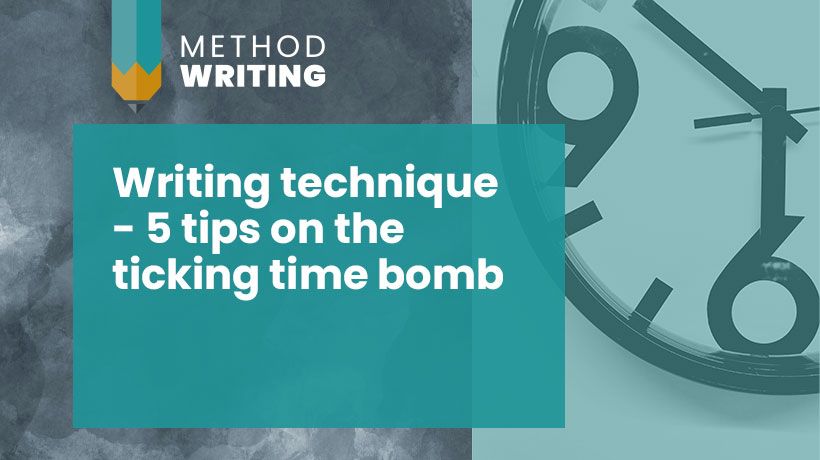Writing technique – signposting issues in fiction
Signposting issues in writing are a common difference between work by beginning writers and that of expert self-editors. Often, new authors are so excited by their fiction world that they forget to paint clear pictures for the reader. Reader who get confused will drift away.
Usually, this happens because the writer tries to cover too much ground and doesn’t provide enough clear signposts, particular in the opening paragraphs.
Note: I’ve fed back on hundreds of stories and novels in progress, and opening overload issues are really common. Tighter editing is often all that you need.
Here are the four top signposting issues I’ve encountered in writing. Spot them, solve them!
1. Too many confusing elements
Symptoms: the writer has tried to cram too much STUFF into the opening paragraphs.
Often, signposting issues happen in writing because there’s too much going on.
Too many characters or proper names, for example – see below.
But this can also apply to other elements of the writing.
For instance, maybe the writer is trying to establish the setting.
In an effort to build the world, they’ve included the beech forest, the town clock, the cobbled street, the overcast sky and the school gates all in the first paragraph.
That’s too many elements. It’s like throwing oranges at the reader and expecting them to juggle them all at once.
We can only handle so many before we begin to drop the balls.
And when they whiz by so fast, we can’t see them properly.
It’s best to concentrate on just a few elements. Two or three, at most. And build them clearly, with enough memorable detail to lodge in the reader’s mind, before adding in more.
The concept of cognitive overload maybe useful here.
In other words: too much information.
Instead, lead your reader in gradually, with a tight focus, deepening what they’re seeing, rather than scatter-gunning them with information.
Writing practice:
To start solving the signposting issues in your writing, first establish how many elements are in play.
Print out a page from your opening few paragraphs of a story or chapter in progress and highlight or underline the nouns. Include the character names and proper nouns.
Mark up the pronouns (he, she, it, they etc) in another colour. These refer to the nouns, so are part of the whole noun picture – the number of things (including characters) that are in the scene.
- How many things are in the scene?
- Are there too many to “see” at once”?
- Does your mind’s eye need to dart around so see them? Or is there a deepening of focus?
- Can some be grouped to form a cluster, eg table, chair, desk light?
- Are they grouped so that their meaning flows easily, or scattered around?
- What do you learn about the key elements of your scene?
See also:
Using camera shots in fiction writing 2 – full shot
2. Too many characters
Symptoms: more than two or three character names in the opening. Actually, three is too many, and two is often stretching it.
Think about it. Each character takes time to develop. Readers need to get to know them, to build a picture in their minds.
So, the more characters you introduce at once, the thinner you’re spreading the reader’s attention.
If you’ve introduced three characters in 50 words, chances are you’ve sketched them in with gauzy thinness. They’re probably very hard for the reader to see.
If both characters are female or both are male, then you need to make extra sure that pronoun signposts are clear. The characters haven’t yet been memorably established, so who “she/he” refers to can easily get muddled.
This is particularly important with dialogue.
Especially early in a scene, characters can seem strangely unmoored from their dialogue, because of a lack of names of pronoun signposts.
See also:
Writing tips | make your fiction characters visible
10 ways to make your fiction characters visible
3. Too many character names
Poor signposting in writing can also be caused by including too many names, even if you just mention them in passing, and don’t intend them to be fully fledged.
Sometimes, writers throw in lots of names, thinking it’ll help to build a vivid picture of the fictional world.
But if we don’t know who these characters are, they’re simply a faceless bunch who dilute our attention on the main characters.
Names need to be distinct and well established to take on a clear shape in the reader’s mind.
Jane, Jean and Jayne are clearly too similar. Calling characters those names is asking for confusion, and you wouldn’t fall into that trap.
But what about Bill, Jim and Bert?
They, too, can be surprisingly easy to mix up as character names. They’re all monosyllabic male names that evoke a particular age group and cultural background.
They’re all short forms of traditional English men’s names. There’s nothing much to distinguish them in register, tone, gender, age, social and cultural background.
So you’ll have to work harder to characterise them fully, and make them distinctive and memorable.
Writing practice:
Reexamine the names in one of your stories. Decide what social class, gender, age group, cultural background they belong to.
Now, change the names and see what effect this has on these parameters.
Try a mix of monosyllabic and multisyllabic names.
Try names from different cultures, social classes, regions or ages.
4. Too many relational and comparative words
Another cause of signposting issues in writing is poorly contextualised words that refer to others. Sometimes, the writing is referencing itself, rather than being firmly anchored to the world it’s describing.
Typical signposting issues here include:
“He/she/they/their/her/his” pronouns
Sarah leapt up and seized Jane by the throat. Her gun was loaded, but she didn’t plan to use it.
Whose gun? Unless this has been established earlier, it’s impossible to tell.
Family words, eg sister/brother/child, or neighbour/friend
Jim’s brother was the golden sheep of the family. His daughter was a kindergarten teacher in London.
Whose daughter? And if Jim hasn’t yet been clearly established, why should we care about his brother and the untagged daughter? Beware of introducing relational characters when the primary anchor character isn’t clear.
Relative words and phrases
It was near the synagogue, and 50 yards west of the supermarket.
What? Does the reader know where those buildings are, and where west is? Story elements need some kind of foundation or starting point, or they’ll feel unmoored.
Provide context, eg the town has a square where these buildings sit. Then the disparate buildings will feel more connected in the reader’s mental picture.
Negative and comparative words and phrases
His appearance wasn’t as striking as Sam’s.
Unlike Maaark, she had no baaark [insert alien thing].
Eh? If don’t understand the primary item, how can we see its opposite, or its absence, or any comparison with it? If I don’t know what Maaark is like, how do I know how she differs?
Writing practice:
When editing your writing in progress, check comparisons and negatives. Look out for similes (as/like), and negative words and prefixes (un-, no, not). Do they have enough context around them?
Check your use of pronouns, particularly in connection with dialogue tags. They’re a common source of editing problems.


